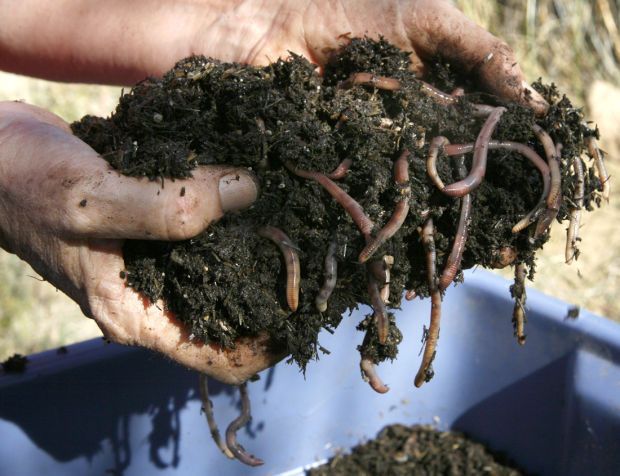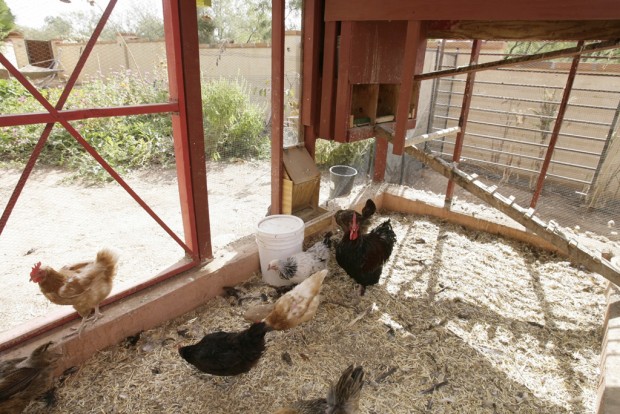You've no doubt read about the advantages and near-miraculous properties of organic matter in the soil. Organic soil matter is anything that used to be alive or is currently alive. Organic matter is a multi-tasking component of soils — among other benefits, it helps with soil structure, fertility, water-holding capacity, and can even buffer soil pH.
Many people think of organic matter as just dead leaves, vegetable matter, twigs, and similar items chopped or composted into small bits. But the key component of organic matter in soil is the living bacteria, viruses, fungi (mycorrhiza), nematodes, insects, and other tiny critters that do the decomposing. It’s a whole ecosystem, and one which scientists still know little about, but it’s clear from years of research that these little creatures are vital for plants to succeed.
The soil microbes break down the organic matter you put on your soil and turn the nutrients contained in it into forms plants can use, creating a slow-release fertilizer that can last for months. The best source of nutrients and microscopic life for your plants is usually your own compost; however if you don’t have space or time to create your own, you can purchase compost from local suppliers such as Tank’s.
The great thing about adding organic matter to soils regularly is that, while much of it gets decomposed and used for food by the aforementioned microbes, the larger components (like humic substances or humus) can last for decades and will provide your soils with many benefits for years to come. Humus refers to large, complex carbon–containing molecules and is one of the soil components that creates a healthy soil texture — crumbly and moist like brownies — and a rich dark black-brown color. Humus provides a non-living structure of large organic molecules (ones that contain carbon), which not only serves as habitat for the aforementioned soil microbes but also help store water, nutrients, and even sequester toxins.

Chickens are a great addition to the garden. They provide free eggs and free manure to feed your plants. Just remember to compost their manure before putting it on plants.
Composted animal manure (such as chicken poop) is a great source of bacteria and nutrients; however, it is important to get manure from animals that have not been treated with antibiotics, since these medications could adversely affect the living microbes in your soil and reduce the efficiency of nutrient cycling. Composted manures also contain salts, so be sure to follow the package directions so as not to damage or kill your plants through over application. If you can’t find antibiotic-free manure, another excellent source of carbon and microorganisms is worm castings, which provide lots of bacteria and nutrients for your soil.

Worm castings are a great addition to your garden soil and provide not only organic matter but crucial beneficial microbes as well.
Mulching with wood chips and bark bits promote the growth of fungal organisms, which are also necessary for your plants. Fungi like to have a top undisturbed layer of complex woody debris to grow in. To encourage mycorrhizal growth in your soil avoid using antifungal pesticides, keep the soil moist and with plenty of organic matter, and avoid disturbing the soil.
Bacteria, on the other hand, thrive when organic matter is mixed into the soil. You can promote bacterial growth by mixing in the organic matter and adding in fertilizers rich in simple starches (like shredded leaves and other small plant materials). All of your vital soil microbes will benefit from keeping the soil moist.
What about inorganic fertilizers?
Inorganic fertilizers do not contain carbon. They are composed of nitrogen, phosphorus, or potassium, known to gardeners as NPK, or the three major nutrients that plants need. Many commercial fertilizers also add other minerals. They were developed for use in farming and are not usually needed in home gardens except when soils are extremely deficient in a particular nutrient.
These products are created artificially through various chemical processes and are sold in forms which are readily available to plants, i.e. they don’t require processing by the soil microbes. The advantage is that they act quickly and can be applied to farming fields in much smaller quantities than organic matter to give the same amount of nutrients.
However, because they were designed for use on large monocrop farms, inorganic fertilizers have a considerable set of disadvantages for small gardens which usually outweigh their benefits. For one thing, their production requires the use of fossil fuels. They are water-soluble, which means they run off with rain or watering and pollute our rivers and washes. They have a very quick turnover and need to be used frequently. They also add salts to the soil, which stresses and may even kill the microbes. It is easy to “overdose” your plants, resulting in possible death of the plant. Finally, they are used indiscriminately by many gardeners who perceive a problem but do not do the soil testing required to diagnose a nutrient problem. This can cause further issues with your soil and plants.
Applying artificial fertilizer is not a good way to build your soil — it only feeds the plant, without supporting the soil ecosystem. Organic fertilizer feeds both the soil and the plants. Keep in mind that your soil microbes will break down the organic matter over time, so you will need to replace it only once or twice a year, depending on how much you add.
For a worry-free fertilization schedule, add an inch or two of compost or a bit of worm castings (¼ -½ cup per 100 square feet) to the top of your soil twice a year and water it in. You don’t need to fret over the amount since it won’t ever harm your plants. Avoid mixing in your organic matter too vigorously, so that you don’t disturb the existing mycorrhizae and damage the soil structure. If you're growing trees, which need mycorrhizae to thrive, do not mix in the organic matter — just leave it on top.






